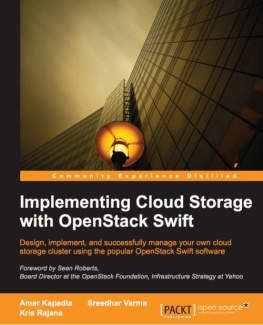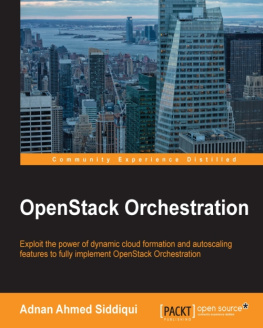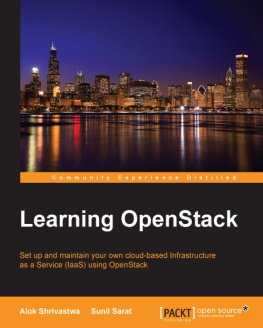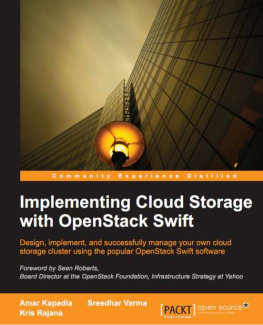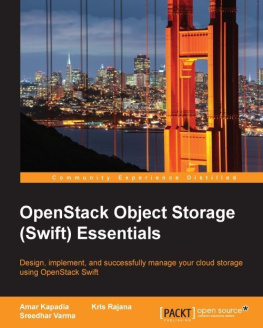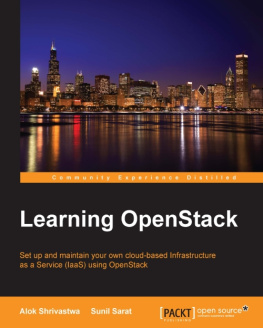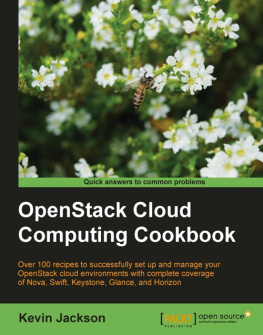Amar Kapadia - Implementing Cloud Storage with OpenStack Swift
Here you can read online Amar Kapadia - Implementing Cloud Storage with OpenStack Swift full text of the book (entire story) in english for free. Download pdf and epub, get meaning, cover and reviews about this ebook. year: 2014, publisher: Packt Publishing - ebooks Account, genre: Romance novel. Description of the work, (preface) as well as reviews are available. Best literature library LitArk.com created for fans of good reading and offers a wide selection of genres:
Romance novel
Science fiction
Adventure
Detective
Science
History
Home and family
Prose
Art
Politics
Computer
Non-fiction
Religion
Business
Children
Humor
Choose a favorite category and find really read worthwhile books. Enjoy immersion in the world of imagination, feel the emotions of the characters or learn something new for yourself, make an fascinating discovery.
- Book:Implementing Cloud Storage with OpenStack Swift
- Author:
- Publisher:Packt Publishing - ebooks Account
- Genre:
- Year:2014
- Rating:3 / 5
- Favourites:Add to favourites
- Your mark:
Implementing Cloud Storage with OpenStack Swift: summary, description and annotation
We offer to read an annotation, description, summary or preface (depends on what the author of the book "Implementing Cloud Storage with OpenStack Swift" wrote himself). If you haven't found the necessary information about the book — write in the comments, we will try to find it.
- Learn about the fundamentals of cloud storage using OpenStack Swift
- Explore how to install and manage OpenStack Swift along with various hardware and tuning options
- Perform data transfer and management using REST APIs
If you are an IT architect or administrator who wants to enter the world of cloud storage using OpenStack Swift, then this book is ideal for you. Whether your job is to build, manage, or use OpenStack Swift, this book is an excellent way to move your career ahead.
What You Will Learn- Understand OpenStack Swift architecture and how it can be used to build cloud storage
- Install OpenStack Swift in a multi-cluster environment
- Choose the right hardware configuration as per your system requirements
- Tune Swift for your particular workload and use case
- Explore what use cases OpenStack Swift is suitable for
Swift, OpenStacks cloud software project, allows users to build cloud storage, a method used widely to slash costs and improve usability. With Swift, not only can users build storage using inexpensive commodity hardware, but they can also use public cloud storage that is built using the same technology. This book will provide you with the skills to build and operate your own cloud storage or use a third-party cloud.
You will start with the fundamentals of cloud storage, how OpenStack Swift is useful for cloud storage, and a review of Swifts architecture. Next, learn about installation, use, and managing Swift with step-by-step instructions and ample screenshots. Perform basic data transfers and access-control-list management using REST APIs. Hardware choice, Swift tuning, and use cases will round off your skills. This book is an invaluable tool if you want to get a head-start in the world of cloud storage using OpenStack Swift.
Amar Kapadia: author's other books
Who wrote Implementing Cloud Storage with OpenStack Swift? Find out the surname, the name of the author of the book and a list of all author's works by series.

